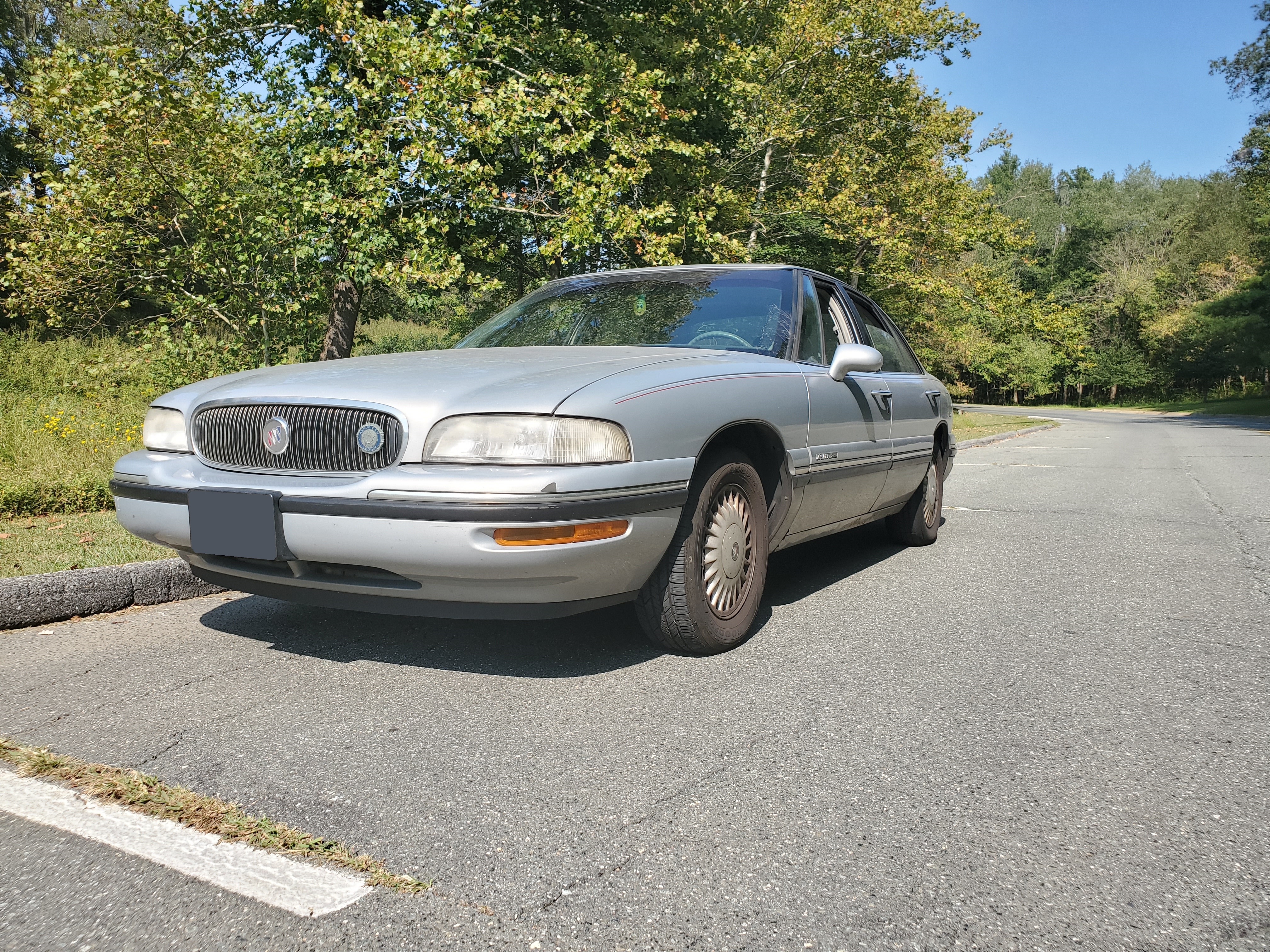
A Quality American Motorcar
Buick seems to get a bad rap with American car enthusists now. Of course the Skylark GS/GSX and Regal T-Type and Grand National are remembered fondly, but their reputation seems to have been tarnished by the 80s and 90s, decades when GM seemed to flounder or falter, moving to front wheel drive platforms and trying to hold off both Japanese and European import cars. These decades were admittedly difficult technologically, with new regulations and market constraints moving in constantly, demanding smaller, lighter, more efficient cars that still were maneuverable and interesting to drive; gone were the days where massive personal luxury coupes were the pinnacle of American automotive style. In the late 70s through the 90s, the luxury sports sedan became in vogue: Buyers wanted performance, comfort, efficiency, and value, and it is difficult for anyone, let alone GM, to satisfy all those requirements. We tend to ignore GM's family car offerings from the late 70s through the early 90s: The 80s and 90s cars that we find sexy and memorable today are the sport compacts and grand tourers. We remember the Mazda RX-7 and the Toyota Supra, not the Dodge Shadow or the Oldsmobile Aurora. History is written by the victors, and the consensus seems to be that American automakers lost the 1980s, and spent the 1990s on the ropes.
GM may not have been able to win with the panache or the underdog vigor that import marques seemed to evoke in the 1980s and 1990s, but they still had the clout of being a large, old, and American automaker, and Americans like the proud, storied legacy as much as they do the upstart underdog. Buick's placement in GM's lineup as a maker of what can only be described as Quality American Automobiles exemplifies this. Buick advertisements from the 1990s really only discuss a few things: They mention safety, comfort, style, and the fact that they're Buick. Buick is a name that carried weight, and still does, but nowadays it seems to have soured, at least in the eyes of car enthusiasts. However, intentions and actions are very different things, so it is impossible to judge Buick, and all the baggage that seems to come with the name, without judging a Buick artifact. People joke about Buicks being "grandpa cars." Is there any weight to that? Is that a fair judgment, or an accurate one? The 1998 Buick LeSabre is well-positioned to answer these questions, and to provide some context to the vision and branding of Buick in the 1990s, and what it meant to GM.

I first started getting actively interested in cars late in high school, around 2013 or 2014: I recall that it was impossible to drive anywhere without seeing multiple LeSabres, especially from the 7th and 8th generations. This is for good reason: the LeSabre sold hugely. The 1998 LeSabre sold 136,000 units, compared to Chrysler's rough equivalent, the Concorde, which sold about 65,000, and also beat Mercury's Sable, which sold about 100,000 units. Back in the 1990s, Americans adored the LeSabre. LeSabre ads from the 1990s talk up its high rankings in consumer magazines as well as its status as the best-selling full size sedan in America. The LeSabre was a winning formula, at least for the American car market of the mid to late 1990s.
What does this winning formula feel like?
The word "boat" is used far too often to describe large American luxury cars from the 20th century, but I find it to be a reductive term. Calling a car a "boat" ignores its suspension and transmission tuning, its handling characteristics, its brake behavior and visibility, and simply offers a derisive comment about the car's size. Yes, perhaps driving a LeSabre is like driving a boat, in the loosest sense, but that's not really fair to either the motorcar or the watercraft. It's a tired comparison.



To start with, let's consider the exterior of the 1998 Buick LeSabre. The LeSabre missed the big "bubble" styling boom of the mid 1990s, waiting until 2000 to get the more curvilinear lines and big, rounded light fixtures: Instead, the LeSabre looks composed and stylish, but a little anachronistic. It eschews much of the typical 1990s styling in favor of a slimmer, sleeker body shape that brings attention to the pronounced C-pillars and the long hood that implies power and speed. The blacked-out A and B pillars make the car look more open and airy, and make it appear lighter than it is. Buick's then-traditional "waterfall" grille and full-width taillight complex are of course present, as are an all-around black plastic cheatline. The LeSabre looks old-fashioned, but retains enough modern touches to avoid being dismissed as out of touch. It feels like a man who, in 2019, wears a three piece suit with a fedora: Stylish and respectable, but also cheerfully anachronistic. GM made a lot of cars in the 90s that tried to fall back on older design language and older aesthetics, particularly with Cadillac and Oldsmobile models, but the LeSabre may well be the best of the bunch, at least in terms of exterior styling.
The interior of the LeSabre is a different story. To start with, it has a split front bench, and can theoretically seat six, though there are only two airbags up front and the center "seat" seems to move with the driver's seat, so having the center section empty (and using the space for the flip-down console-cum-backrest) makes more sense. The seats are incredibly comfortable, but in a couch-like way, not a car seat-like way; They are soft all the way through, with limited side bolstering. The driver's seat also boasts electric power adjustment, both fore and aft and along two vertical axes, both of which seem to both translate and rotate the seat. These features seem mundane today, but were certainly something to brag about back in 1998.
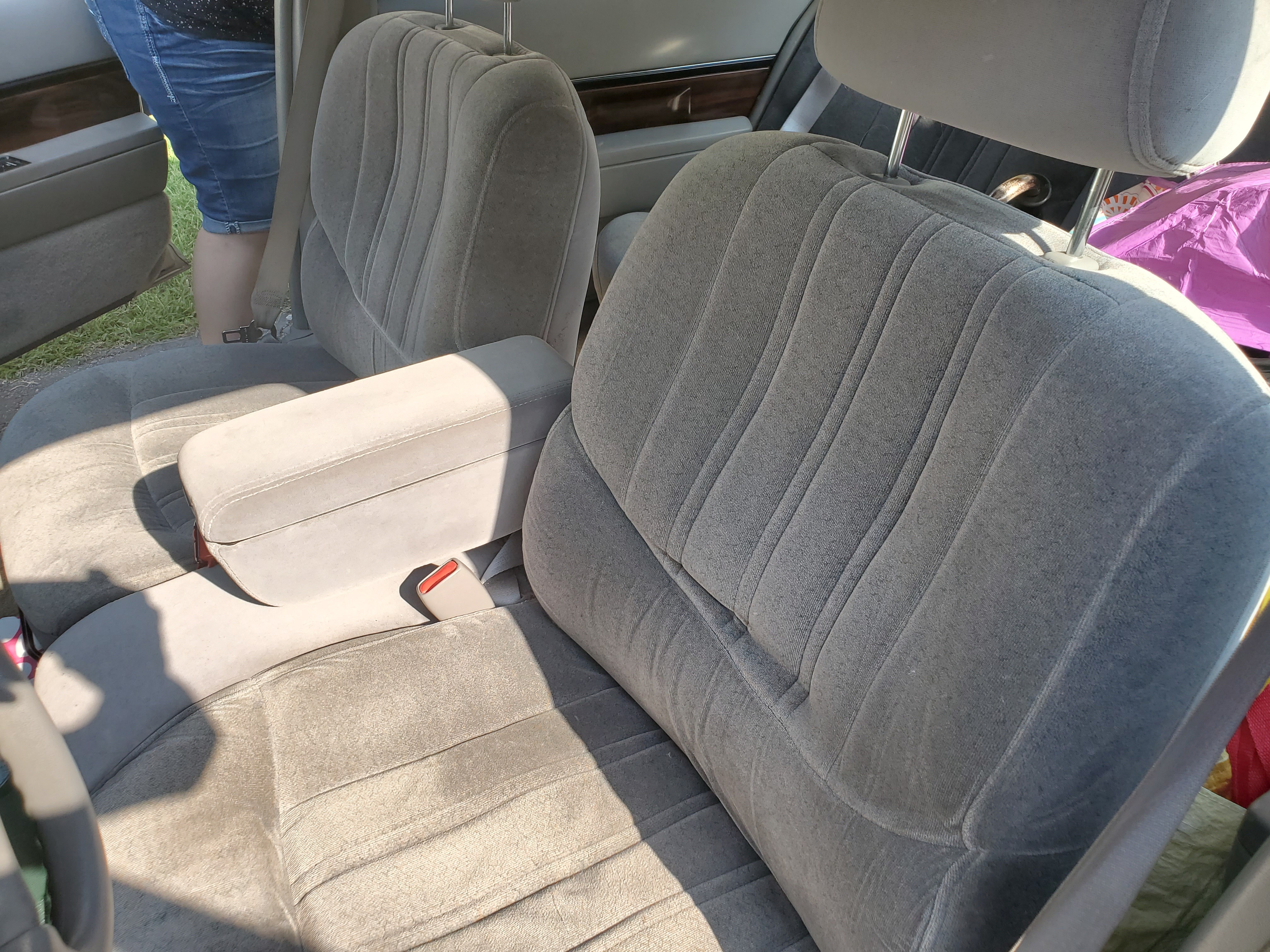
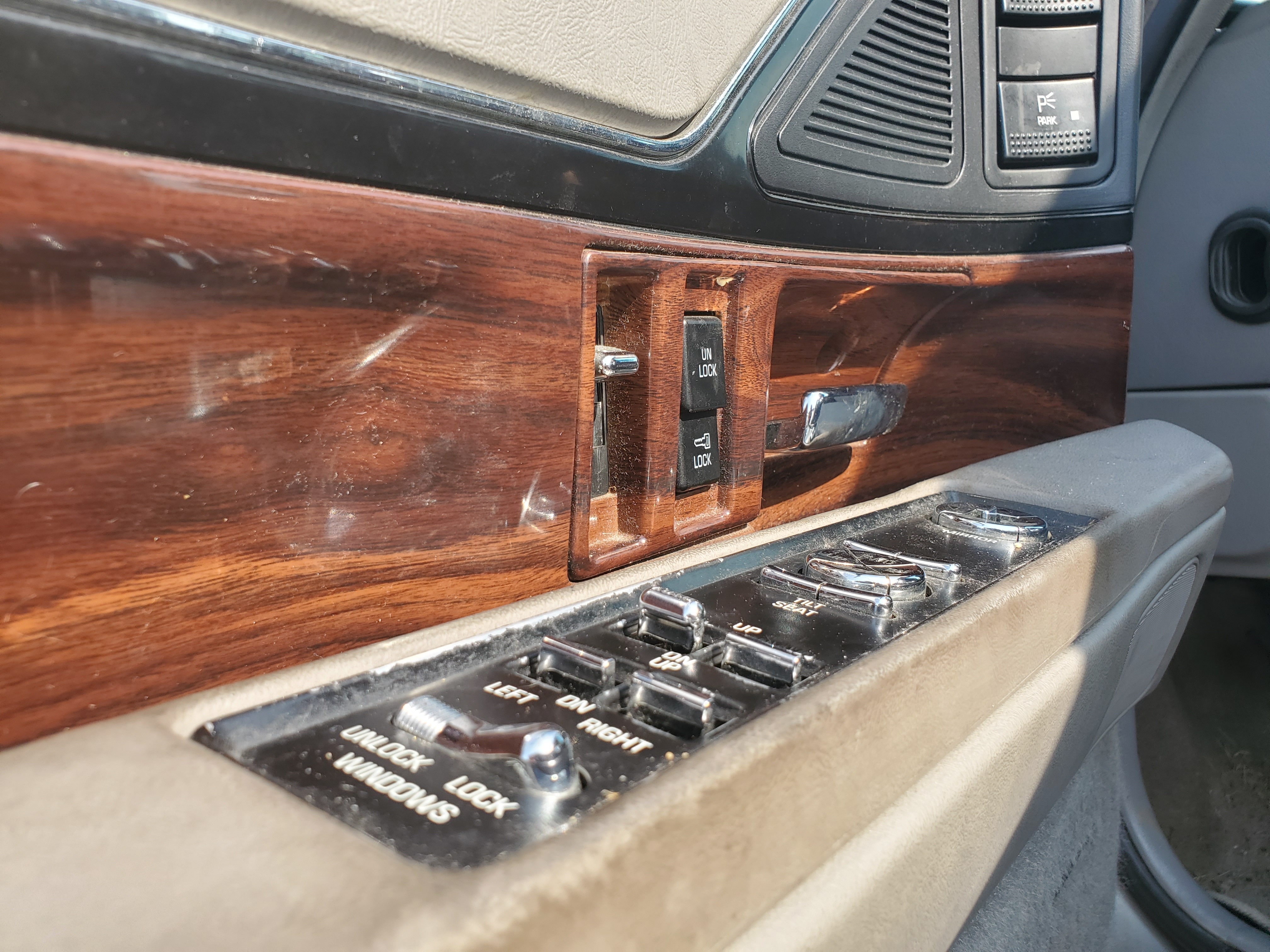
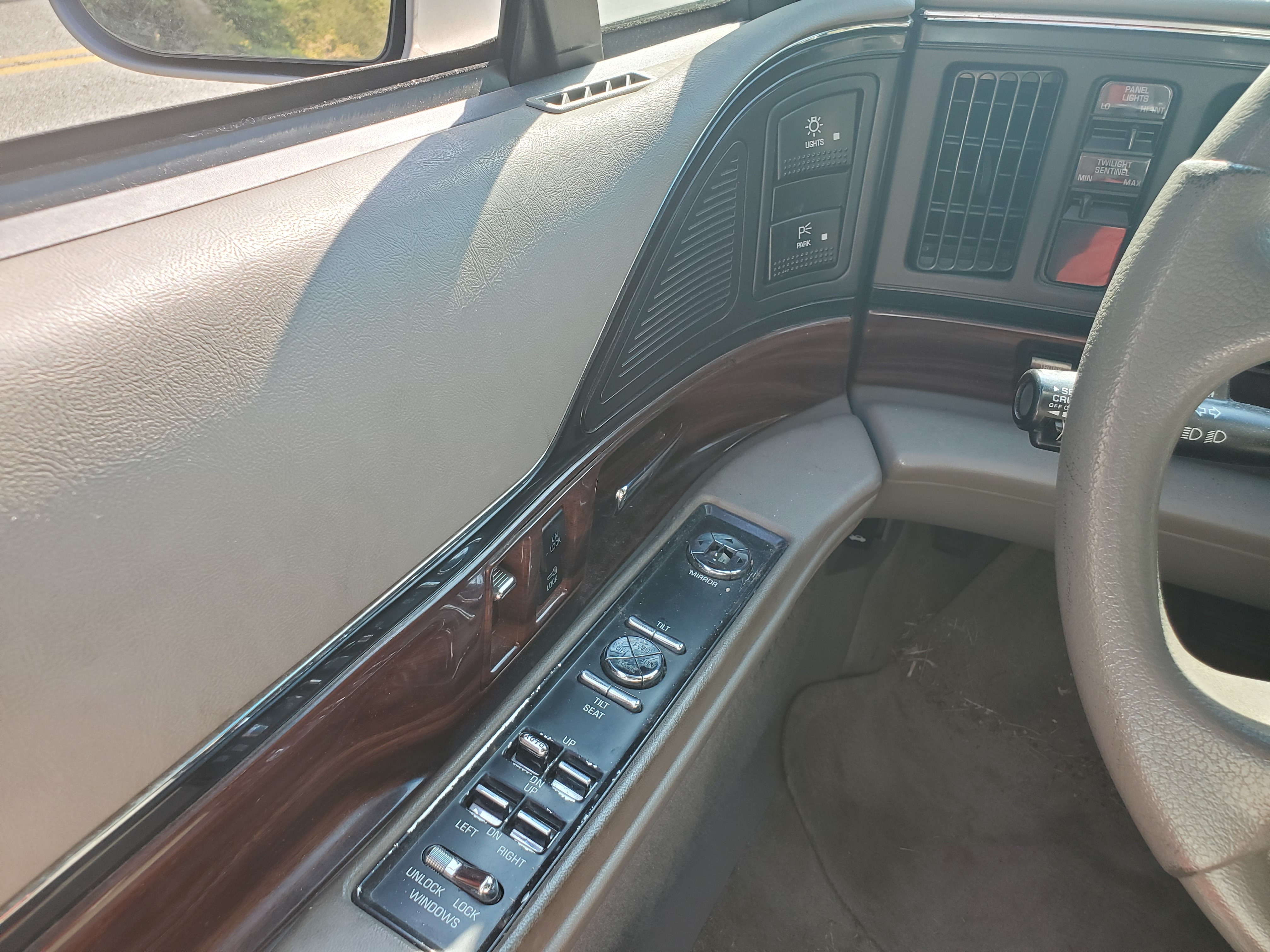

The interior design of the LeSabre is certainly distinctive today: In the day and age of driver-centric interiors and wraparound consoles loaded with controls (take for example the Buick LaCrosse's BMW-like gear selector knob), the LeSabre's wide, flat, expansive dash feels antiquated. While modern dashboards all slope away from the driver, opening up space, both figuratively and literally, the LeSabre's dashboard stands tall and vertical, as if to act more like a wall than a console. The center dash holds no shifter or other driving controls, and is dedicated entirely to the HVAC controls and the stereo. All the driver's controls are on either the steering column or the door; this actually leads to a very ergonomically friendly environment, with all major controls being easy to reach (but hard to find, if you aren't used to the car's control layout.) Exterior light controls are surprisingly positioned on the door; both parking lights and headlights have separate switches, with the headlights additionally having a delay feature (curiously dubbed "Twilight Sentinel", which sounds like something from an R.A. Salvatore novel) to illuminate the driveway after the driver exits the car. Interior styling features a healthy mixture of wood, dark plastic, and what seems to be vinyl leatherette, and looks professional but tasteful, even today. The wood trim has a very nice finish to it and gives the car a more upscale look than a pure plastic interior might.
The LeSabre, like many 1990s cars, features narrow roof pillars, owing to the absence of rollover strengthening or head protection airbags; this means that visibility is excellent. However, the conspicuous lack of airbags compared to modern cars, combined with the thin steering wheel, makes the LeSabre feel unnerving to get into. I found myself treating this car very gently, somehow knowing that a crash of any severity would probably be lethal. At no point in my test drive did I feel completely safe in this car. However, let us remember to not fall into the trap of presentism: Cars of the 1990s were not what they are today, and by the standards of 1998, the LeSabre felt safe, secure, and confident, at least for most families who care more about space and comfort than handling.
All of the aforementioned controls feel less upscale than the interior does, in general. All of the driver's various switches feel like controls on an old boombox, with solid, heavy detents yet a creaky feel that made me constantly afraid I would break something. The signal stalk is no exception, and even the column shift lever feels imprecise and heavy, yet fragile at the same time. In all fairness this is probably a fact of the state of the art of automotive design in the 1990s, and judged against contemporaries, I'm sure that the LeSabre's controls feel perfectly appropriate for its price point.
So far it seems that a quality American automobile of the late 1990s was a car that revels in its anachronisms and presents a living room-like atmosphere for its occupants. For a 1990s Buick, the world is only as modern as you are willing to allow it to be.
How does the LeSabre drive?
Again, I will not say this car drives like a boat. Calling it such would be not only trite and unimaginative, but also disrespectful and reductive to the user experience that Buick's engineers designed. That said, the LeSabre is quite obviously not a performance car. I therefore begin with handling, such as it is. Simply put, the LeSabre doesn't handle. Any approach to a turn that doesn't involve substantial braking beforehand and relaxed accelerator input will result in understeer, guaranteed. The LeSabre feels both too numb and too jumpy at the same time, and the front tires seemed to always want to let go, regardless of my treatment of the car in a turn. Combine that with the extremely heavy power steering assist (you can drive this car with the tip of your thumb), there is no communication between the front wheels and the driver. This car will not warn you with anything other than squealing tires when it begins to let go. Either contributing to, or ameliorating this problem (I am truly not certain which) is a four-wheel independent suspension system, using standard MacPherson struts up front, and with a different type of strut suspension in the rear. The rear suspension uses a single large track control arm, with the spring mounted not on the strut, but on the arm itself. This was likely done to open up space on the strut to use a pneumatic load-leveling system for the rear suspension, it seems. I have seen Buick's "Dynaride" described anecdotally on forums as such a load-adjustment system, which keeps ride quality and vehicle stance the same, even when the sizeable trunk is loaded with luggage. Dynaride or no, however, the LeSabre is not a car for twisty roads; it seems much happier with sweeping freeway curves and slow drives along country lanes. That said, country lanes aren't effortless: The LeSabre makes small roads feel even smaller, as the hood is both long and quite visible from the driver's seat, and with the small side mirrors, judging the lane positioning and size of the car is very difficult. Narrow roads take a lot of concentration, and given the suspension tune and steering sensitivity, panic corrections aren't too likely to succeed.
It should be mentioned that the roughness of said country lanes is not a factor for the LeSabre driver; the suspension does a masterful job of damping out road noise, road feel, as well as bumps and jolts. This is a supremely comfortable car on all roads, regardless of surface quality. The tall tires (70% sidewall ratio? what?) likely help with the ride quality, as well as allowing the LeSabre to ride over potholes and ruts that might give a newer car, with its low-profile tires, a nasty pinch flat. Road noise and road feel are especially comfortable at speed on highways: The cabin is speaking-volume quiet, meaning that long road trips give the passenger niether a sore bottom nor hearing loss, though the less-than-supportive seats might make one's spine unhappy.


How about the LeSabre's powerplant, then? I have heard '90s GM enthusiasts talking about the 3800 V6 enthusiastically, and I had high expectations for the motor when I drove the LeSabre. The 3800 is an older engine design, and uses a pushrod valve actuation system as well as an iron block. The 1998 LeSabre is fitted with the Series II variant of the 3800 V6, developing 205 horsepower and 230 lb-ft of torque. Do you ever feel all 205 horsepower? Absolutely not. In between the loose transmission programming and the generously coarse control the accelerator pedal affords, performance driving in the LeSabre is not generally possible. The transmission (GM's beloved 4T65E) shifts extraordinarily smoothly, with absolutely no vices for normal driving, and even if shifts are slow, they are extremely difficult to notice. The transmission can theoretically be controlled manually using the D-3-2-1 detents on the shifter, and theoretically this means that all four gears can be sequentially selected by the driver. In practice, as mentioned above, the shifter is imprecise and loose, and I was completely unable to select the second gear detent. The LeSabre's H-body sibling, the Pontiac Bonneville, also used the Series II 3800 and 4T65E powertrain, but it got a floor (console) shifter, which probably makes "manual" gear selections easier. The accelerator pedal travel is very long, much longer than the brake pedal's travel, but it has a seemingly limited effect on the engine anyways. Full engine torque is available at approximately half depression, and any further pedal travel beyond that makes seemingly no difference on engine performance or behavior. The top half of the pedal travel is a little more sensitive, but not much; precise speed control is generally easy with the LeSabre, and highway on-ramp pulls are no problem for the 3800. Engine noise, as with road noise, is very muted, and only when the engine is really working hard does it start to intrude considerably into the cabin. Thusly, the absence of both engine and road noise, combined with the muted steering feel and the sheer size of the car, eliminate any real perception of speed from the user experience. The driver must rely entirely on the (rather small) speedometer, because 70 miles per hour feels like 40 in this car.
When you realize you're 25 over the speed limit though, you can slow down confidently: The LeSabre's brakes are responsive and capable. The pedal does not feel soft or disconnected and the brakes are more than powerful enough for normal driving scenarios. The brakes can't hide the LeSabre's sheer mass, but they make it much easier to manage, and make the car more responsive than I had anticipated. The LeSabre receives front discs and rear drums, and considering the tall and narrow tires, equipping rear discs probably would not make too much difference. Befitting Buick's image as a safety and value-oriented brand, the LeSabre comes with ABS, and in 2000, with its final generation, received traction control as well, years earlier than the majority of the US car market.
Generally speaking, the 1998 Buick LeSabre is a predictable and docile car to drive. It has responsive brakes, very easy steering, and reasonably capable acceleration, with its only major drawbacks being a complete absence of handling confidence and road feel. However, those are only downsides if you're the kind of person who doesn't slow down for corners, and for cautious and laid back drivers, the LeSabre is a perfect companion, perhaps lacking only in fuel economy, which wasn't great when the car was new, and certainly isn't good now. Generally speaking, the Buick LeSabre is a car that is never in a hurry. It takes winding roads slowly, and encourages gentle brake and steering inputs, and even with the mighty torque the Series II 3800 pumps out, the LeSabre still saunters its way down the onramp. If you want a beater that is, above all, spacious, comfortable, and easy to drive, than look no further than a LeSabre. They have some solid creature comforts for cars of their age, and the 3800 V6 enjoys a substantial amount of documentation online.
What was Buick trying to sell?
I found the LeSabre very hard to read from a textual standpoint, at first. The design decisions Buick made seemed absurd, or willfully inefficient. However, as with all cars, the LeSabre is more than the sum of its parameters, and in this case, what that gestalt represents is a way of being. Buick's bestseller sought to sell not just a comfortable, high value family luxury car, but to sell an idea. Much like the Toyota Prius Prime, the Buick LeSabre is a car that, above all else, has the user buy into its concept of how cars, people, and the world interact. When you buy a Buick LeSabre, you buy into the idea that the future is here, and that it is mundane, and that, through striving for superior technology, man has made distance, and the act of travel, insignificant. The Buick LeSabre is a car that celebrates man's (perceived) dominance over nature, space, and time.
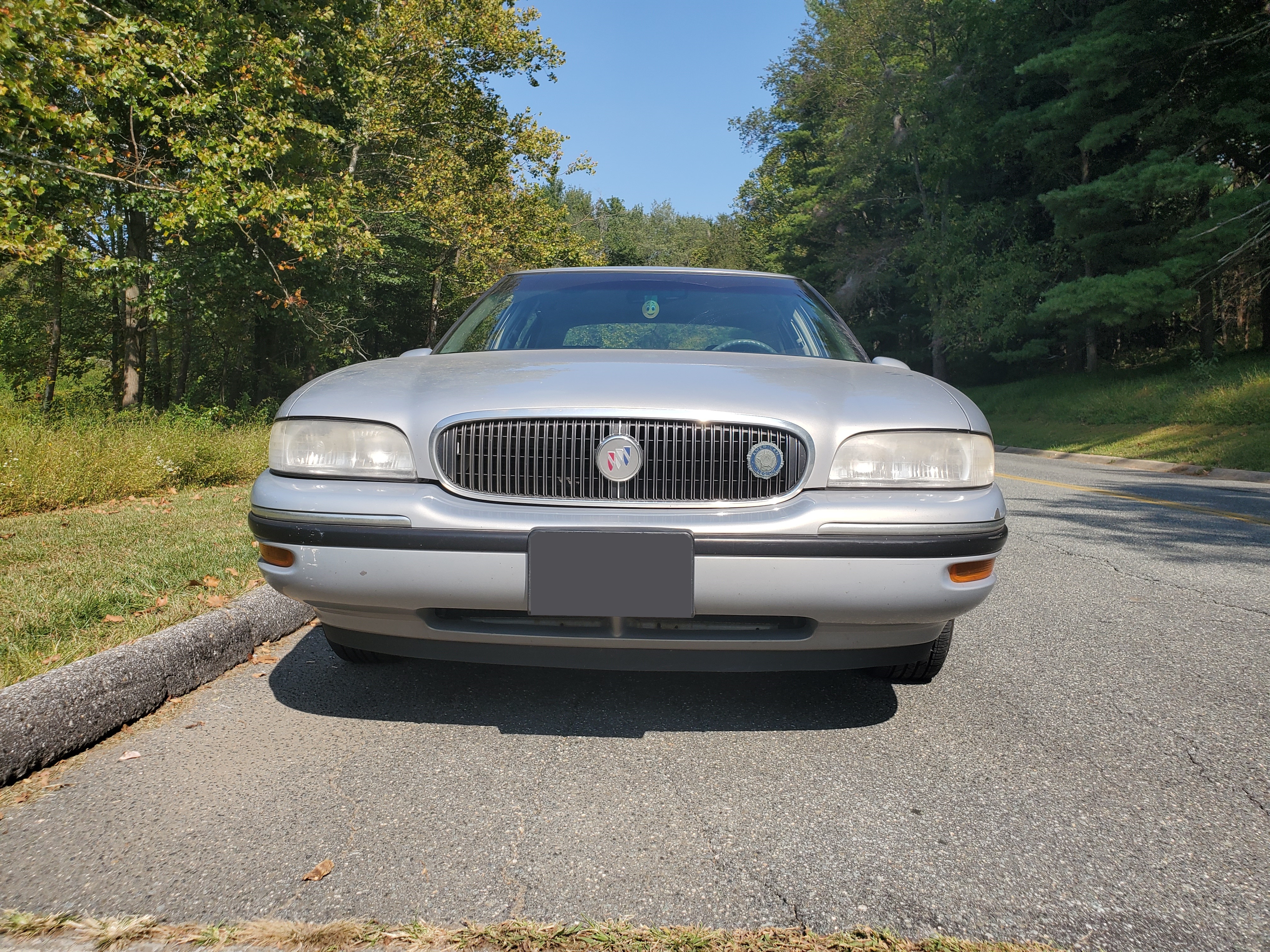
The LeSabre's big V6 makes highway acceleration quiet and effortless, and its decent(for big pushrod V6s of the time) fuel economy made highway trips logistically easier. Add in a sophisticated stereo, cruise control, a soft suspension tune, and an astoundingly quiet cabin, and you have a car that makes road trips feel like a lazy Sunday afternoon. The fully independent suspension does more for comfort than for handling, but it makes the car confident and composed across bumpy roads and potholes. This is a car that has no pretentions about being a "performance automobile" like so many luxury cars do today; instead it leans entirely into being comfortable, reassuring (for the time), and predictable. This is a car that is meant to either eat up highway miles or cruise slowly along small country roads. The muted sense of speed, the absence of road feel, the quiet engine and loose steering, all of these diminish the driver's perception of the outside world moving past them. In a LeSabre, you don't drive anywhere: You get in the car and the world moves around you.
The Toyota Prius Prime is a car that sells a shiny, sustainable new vision of the American Dream, where you can have a big car and drive it 40 miles to work every day from your cookie-cutter house in the suburbs, and you can be carbon-neutral doing it. You can cruise down the freeway with your arm out the window and the stereo blasting Jimmy Buffett and not worry about wasting gas. You can have a big car that makes you feel sophisticated and important, but you don't have to break the bank for a full EV or burn more gas with a non-hybrid conventional car. The Prius Prime is a car that promises a future, a world that's just around the corner, that you know is just like your own world but better in every way. Conversely, the Buick LeSabre tells you that the future is already here. In a LeSabre, we have already achieved our full potential: We have technical mastery of our world, and we have made distance insignificant. You buy into a fundamentally different way of traversing the world with a LeSabre: The absence of dialogue between driver and road is no accident. You don't drive a LeSabre, you navigate it, because driving is something that people with import compacts do. A Buick owner doesn't drive, a Buick owner is conveyed. This is the fundamental thesis that Buick seems to have been designed around in the 1990s: They were selling cars that offered people an alternative to the typical driver's user experience. Those who bought Buicks back then were buying into the idea that distance is malleable, and that a drive is only as tedious or as uncomfortable as we allow it to be. Has this concept aged well? Not exactly, but in its time, it was both relevant and deeply appealing. Current analyses of 1990s Buicks should regard them in the context of their own time, and their designed user experience, as opposed to brushing them off as being "grandpa cars." To do so would be presentism.